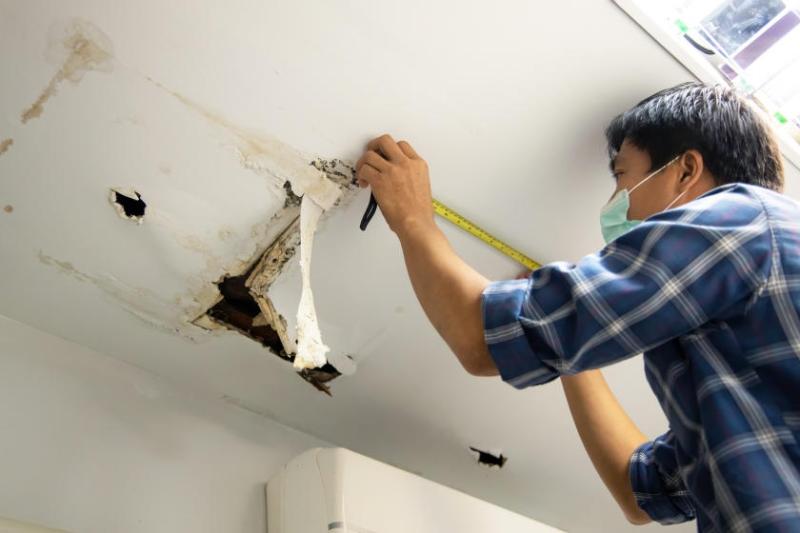Leaking Ceiling Causing Water Damage? What You Should Know

The structural integrity of your house may be in danger if a leaky roof rapidly worsens into a serious problem. If water gets into your ceiling, you can get unsightly stains on the walls, cause the materials to weaken, and even promote mold growth. If it is not treated, water damage will occur, which may require expensive repairs. This article discusses what causes water damage to your ceiling, how to protect yourself, and how water damage restoration could help.
Common Causes For A Leaking Ceiling
A ceiling leak can be attributed to several different factors. While some are easy to detect, others can be difficult. Here are the common causes of ceiling leaks.
Repairing Roof Damage: A roof with damaged or missing shingles is a common problem. Other causes include cracked flashings or blocked gutters. If the protective layer on the roof is damaged, water will seep through to the ceiling.
HVAC Troubles: Condensation or clogged drainage lines can lead to leaks in air conditioning units located in the attic. This moisture will eventually cause a ceiling leak.
Bad Waterproofing: Inadequate waterproofing in areas such as bathrooms or kitchens could allow water to penetrate the ceiling. This is more common when the caulking surrounding sinks and baths has deteriorated.
Understanding the cause of the problem will help you to solve it effectively. Ignoring this root cause may lead to more problems in the future and can exacerbate damage.
Steps You Should Take If You Discover A Leaking Ceiling
When you notice that there is a water leak in your ceiling, take immediate action to reduce the amount of damage. Take these easy actions to lessen the effect:
Capture the Leak: Place the bucket or container below the leak to collect the dripping. To prevent the ceiling from collapsing, poke small holes to release the water.
Identify Source: Track down the source of a leak. This could be the roof, HVAC, or plumbing. This will enable you to decide whether a temporary patch or emergency repair is needed.
Turn off the Water Supply, if applicable: If the leak is due to a plumbing concern, shut off the water main supply to stop the water flow and prevent further damage.
Move furniture and belongings: Move furniture or electronics away from an affected area to protect them from water exposure.
Water Damage Restoration Has A Role
A water damage restoration service is crucial for preventing future issues and dealing with the aftermath after a ceiling has sprung a leak. Here are some ways a water damage restoration company can help you:
Assessment And Inspection: A restoration expert will conduct thorough inspections to assess damage and find the source. This includes looking for moisture hidden beneath the surface.
The Remediation Of Mold: Restoration professionals can perform mold remediation if the mold is growing. They will remove spores to prevent their spreading.
Damage Repairs And Restoration: As the last step, it is important to repair structural damage, such as replacing damaged drywall, insulation, or flooring. Restoration services return the affected areas to a pristine condition.
Water damage restoration can be essential to protecting your home and maintaining a safe environment. By repairing the damage caused by the leak, you will avoid future costly repairs and health hazards.
Water Damage And Leaks: How To Prevent Them?
To minimize the chance of a leaking roof and water damage that follows, take these preventive steps:
Roof Inspections: It is important to inspect your roof regularly. Do this at least twice annually and after any severe weather. Look for damaged or cracked shingles, clogged gutters, and cracked flashing.
Check HVAC Systems and Plumbing: Maintain your HVAC and mechanical systems. Look for signs like leaks or excessive condensate.
Maintain Ample Ventilation: Proper venting in areas susceptible to moisture, like kitchens and bathrooms, will help prevent excessive humidity from causing leaks.
Conclusion
Even though a ceiling leak may appear to be a minor problem, it can quickly lead to significant water damage if left unattended. Understanding the risks of water damage and taking action quickly, such as restoring it, will help protect your property and provide a safe home environment. These steps and preventive actions can help minimize damage, saving you money on future repairs.
Comments